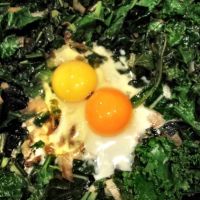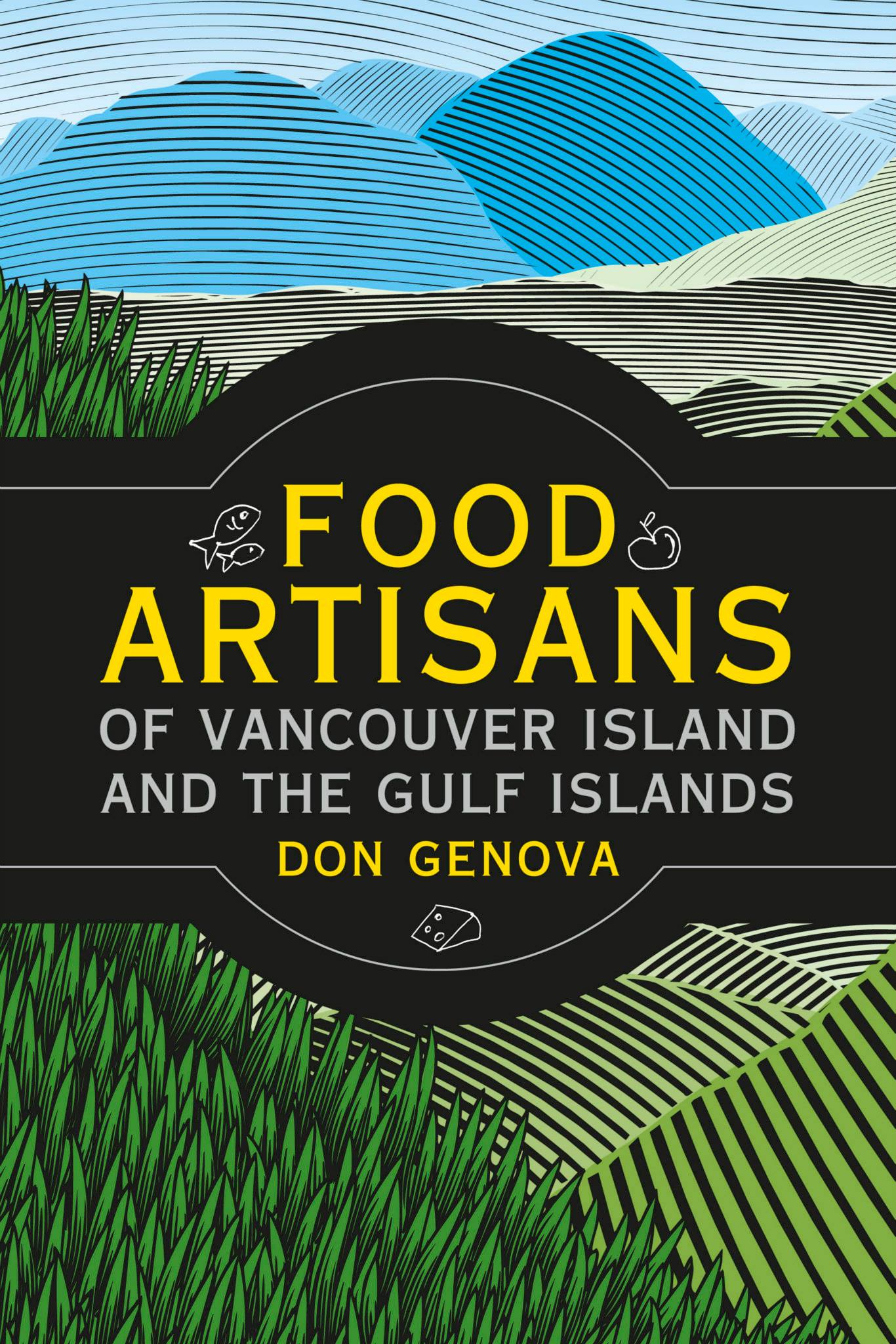Just like many other food products, the choices we have now in the egg department are getting to be overwhelming. Visit most grocery stores and you’ll probably find a dozen different choices in your dozen-sized boxes of eggs. I have been pondering about all the choices and I shared my report on this week’s edition of Food Matters with Jo-Ann Roberts.
I know I’ve talked about eggs before, but it was more in the way of production of the eggs, this time I’m talking about what is actually inside an egg…today’s conversation was spurred on by a photo I posted on my Facebook status last week. It was lunchtime. I had two kinds of eggs in the fridge. One, a typical supermarket egg, the second, an egg from the dozen I bought from my neighbour across the street, they keep chickens and sell the eggs by the old-fashioned honour system from a cooler at the end of their driveway. When I cracked these two eggs into my frypan on top of some kale, the colour difference of the yolks was staggering.
I asked my friends to identify which was which…everyone knew that the one that was a darker yellow, or almost orange in tint was my neighbour’s egg. But one friend said the paler egg yolk was just the same colour as some organic eggs that she’s bought in the past. So that got me thinking….what determines the colour of an egg yolk and does it make a difference to the taste and nutritional value?
Some facts I expected and then there were some surprises. By the way, before I get started on the yolks, just a note that the colour of the eggshells has nothing to do with what’s inside. The colour of the shell is determined by the breed of chicken….white, brown, pink, Martha Stewart green and blue…still the same egg inside. But the colour of the yolk has a lot to do with what the chicken eats. But that’s not all black and white…or shades of yellow. Chickens that spend more time outside and peck their way through more green leafy plants (or yellow nasturtium or marigold flowers) are eating more lutein. And lutein is a natural carotenoid, a substance that turns up in chickens and their eggs in a yellow tinge.
So you’d think that if your chickens aren’t eating leafy greens you’ll get paler eggs…but that’s not quite so. Chicken feed in Canada is allowed to have something called canthaxanthin added to it, some 30 grams per metric tonne of complete chicken feed, according to the CFIA. That substance, usually obtained from ground up shrimp shells, is also a carotenoid. It’s the same thing salmon farmers feed to salmon to make sure they get that salmony colour in their flesh, so the colour of the yolk can be modified within the purchased feed to determine the colour.
And if you were a chicken farmer who had a big restaurant customer who wanted more or less colour in their yolks, you could try to make your yolks all the same colour by adjusting the amount of colourants in the chicken feed. Chickens who have access to outdoor weeds and greens will have a variation season to season depending on what kind of feed is available to them. Summer drought could equal paler yolks…
Paler yolks have the same nutritional value as the darker yolks, according to Dr. Peter Jones. He is the director of the Richardson Centre for Functional Food and Nutraceuticals at the University of Manitoba. Although he does say the extra lutein in darker yolks could be better for your eyes, it’s seen as an ingredient that could help discourage macular degeneration. When it comes to other kinds of eggs now on the market…the ones with a higher Omega-3 fatty acid content, and now there are eggs with a higher Vitamin D content, he says they do have the extra levels they claim to, as the laying hens are great converters of turning their feed into usable acids and vitamins for us. In the Omega 3 eggs, for example, they are fed linseed oil and flax seed oil to pump up the levels.
Dr. Jones doesn’t believe that taste is affected by the colour of the yolks,although he admits he hasn’t done any blind taste testing. I disagree with him, and I’m sure many of you do as well. It was kind of awkward to do a proper blind tasting for Jo-Ann on the radio show, because I think the biggest taste and texture differences turn up in soft-boiled or runny yolked eggs, but I did bring in some different hard boiled eggs to show her the colour difference and to see if we can notice a taste difference. (She did prefer the taste of the egg from my neighbour, and the texture of the yolk in the OmegaPro eggs I brought in. She felt the yolk in the generic egg was incredibly dry.)
Bottom-line from Dr. Jones is that he feels eggs have had to get over a bad reputation ever since it was decreed by earlier health experts that too many eggs raised your bad cholesterol, when in fact it’s now been proven that’s not the case, and he says it’s great to start your day with a couple of eggs because it gives some great nutritional substance to your breakfast. But don’t get fooled by the colour of the yolks. I’d love to hear from you if you can taste the difference between free range eggs and the more typical battery hen eggs below in the comments section. And if you want to listen to my conversation with Jo-Ann and her tasting comments, you’ll find the audio file eventually posted here.




